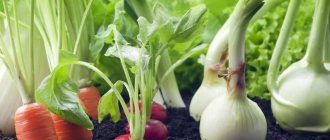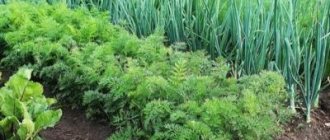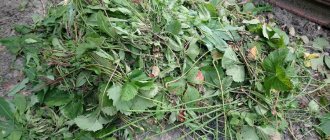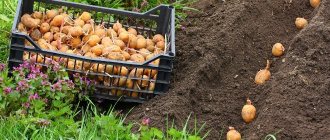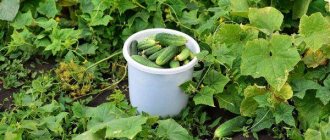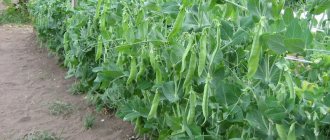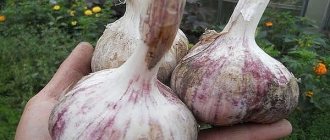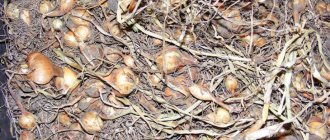A rich harvest of vegetable crops depends not only on the choice of productive varieties and care of seedlings. It is also important when choosing a site to follow the rules of crop rotation - alternate vegetable crops in the garden and choose the right neighbors for them.
If these rules are followed, the soil will not be greatly depleted, and harmful bugs and pathogenic microorganisms will not appear on the plants. And even the amount of weeds may decrease.
Why is it important to follow the rules of crop rotation?
Not all beginning vegetable growers understand what crop rotation is and why its compliance has a positive effect on the growth and development of vegetable crops, as well as on their yield.
Related article:
Which carrot varieties are best for planting?
Follow these rules for the following reasons:
- when the same crop is grown in the same bed, the same pathogenic microorganisms, as well as harmful insects, accumulate in the soil. Therefore, you will have to constantly additionally process vegetable crops;
- Each type of vegetable selects certain types of nutrients from the soil, which leads to its depletion. In order to prevent deterioration in soil quality, it is necessary to constantly apply large amounts of mineral fertilizers and organic matter, and this is an additional expense;
- If these rules are not followed, viburnum will accumulate in the soil - toxins released by the root system of cultivated plants. And if the same vegetables grow in the garden for more than 2 seasons, then the amount of toxins will be too large. As a result, the growth of vegetables will slow down and the quality of the harvest will be worse;
- With proper rotation of vegetable crops, the soil is less depleted and the amount of weeds is reduced.
Related article:
How to sow carrots with coffee
How to choose neighbors for carrots
We figured out what crops carrots can be planted after, but we also need to figure it out with our neighbors. A garden neighborhood can be both very dangerous and useful. This also applies to carrots.
You may be interested in: Potato varieties: names, descriptions and photos of varieties
Planting carrots and onions
The best neighbor for a healthy vegetable is onion. The smell of onions will effectively repel carrot flies, which often attack root crops. Onions also prevent root mites from multiplying.
Gardeners use a special method of planting these crops. They are planted with seeds in rows, alternating crops. If you are planting onion sets, then first you need to plant carrots in the garden bed, and then plant the sets a few weeks later. Onions and carrots grow well if you plant them in a row or two.
Important! We must not forget that growing tomatoes next to onions is prohibited, but they grow wonderfully next to carrots.
Helpful neighbors
- Next to legumes, carrots grow tasty and juicy. To do this, you can plant beans or peas nearby.
- Growing next to sage, spinach or lettuce is beneficial for carrots.
- To protect the carrot bed from the proliferation of pests, it is useful to plant marigold or marigold flowers along the edge of the bed.
Dangerous neighbors for carrots
- It is necessary to avoid the proximity of carrots to celery. Unlike some other herbs, celery attracts annoying insects and only threatens the normal development of the root crop.
- Carrots should not be planted next to dill and other spices.
- If horseradish or beets grow together with carrots, they will fight for the nutrients that are in the soil. Gardeners will not expect a good harvest from any of the crops.
- In the garden, it is better to plant carrot beds away from apple trees. The close proximity of crops will worsen the taste of apples and carrots.
What is best to plant after carrots next year in open ground?
Most often, carrots are grown not in greenhouse conditions, but in garden beds. But since this root crop is too susceptible to its toxins, which it releases during the summer season, carrots can be grown in one place after 5 seasons.
To improve the health of the area after carrots, next season it is recommended to plant any type of green manure in its place. In the second year, cabbage or cucumbers are planted in this area. In the third season, green manure needs to be planted again. And after them in the fourth year - onions. And only after this can the carrots be returned to the garden.
Important! Carrots extract a lot of minerals and organic matter from the soil - several times more than tomatoes and cucumbers.
Therefore, after carrots, you should add a complex of mineral fertilizers and organic matter, and then plant tomatoes or cucumbers.
Related article:
Sowing carrots: recommendations for sowing and care
Also after carrots you can grow the following vegetable crops:
- any types of pepper;
- cabbage, early varieties of radishes, lettuce and mustard (as green manure); beans, peas, beans or soybeans;
- tomatoes, potatoes, eggplants, physalis or sweet potatoes;
- artichoke, for which excellent drainage should be provided.
Any vegetables with a root system located close to the surface and fruits that ripen above the surface of the ground are suitable for planting after carrots.
Characteristics of culture
Is it possible to plant onions after carrots before winter? What difficulties will you have to overcome in order to grow winter sets and what rules must you follow when growing carrots? To answer these questions, consider the characteristics of each culture.
Onion
This perennial herbaceous plant belongs to the onion family . It can be grown from seeds (nigella) and from sets. They are sown in open ground at the end of April - beginning of May. The plant is cold-resistant and can withstand light frosts. Sevok is planted in spring or before winter, the average ripening period is 70-110 days.
For full development, the crop requires moderately moist soil with good air exchange. Often, the soil is drained for better oxygen penetration.
Fertilizers are applied long before sowing, since the crop loves well-fertile soil. During the growing season, no more than three feedings are carried out, excluding organic matter and fresh manure. Organic matter - chicken manure or mullein - is added to the ground during autumn and spring digging.
The main elements for full development are phosphorus, potassium and nitrogen.
Carrot
Carrots are a biennial herbaceous plant from the Apiaceae family . Sowing is carried out both in spring and before winter. For the summer, only late-ripening carrots are planted, and for autumn sowing, cold-resistant early or mid-ripening varieties are used. Seeds of cold-resistant varieties can germinate at temperatures of +3…+5℃. At lower rates, the seed material will not sprout. Spring sowing begins at the end of April, and in the southern regions planting is possible from March.
Beds for carrots are organized in a sunny place , this vegetable is light-loving. In a shaded space, the formation of root crops will slow down significantly.
The soil should be light and loose ; loamy or peaty soil is considered ideal. The culture is demanding of moisture and needs regular watering. It is not recommended to allow the soil to dry out. All nutrients are added to the soil before sowing the seeds. During the growing season, only magnesium fertilizers are used.
What to plant after carrots is not recommended
You need to start the list of plants that will not grow well after this root vegetable with the carrots themselves - they can be planted in their original place only after 4 seasons, not earlier.
Also, do not plant after carrots:
- beets;
- watermelons;
- pumpkin;
- squash;
- melon;
- zucchini;
- any greens;
- spicy herb;
- celery;
- chard;
- spinach;
- onion;
- garlic.
Related article:
If the carrots crack and become crooked
After the carrot harvest is harvested, many vegetable growers plant garlic or onions in the free space in the winter. But it is undesirable to do this according to the rules of crop rotation; it is better to plant green manure there, which is plowed up in winter.
Useful tips for gardeners
Recommendations from experienced gardeners:
- Planting is carried out 3 weeks before the onset of frost.
- The planting process can be carried out at temperatures from +5°C in dry, windless weather.
- If a vegetable is planted in the soil after potatoes, the soil should be thoroughly disinfected to avoid nematode infection.
- The best soil for growing is loam with neutral acidity.
- The soil for planting the crop in question should begin to be prepared immediately after the carrot harvest. The soil is dug up to a depth of 30 cm and organic fertilizers are added in the form of rotted manure (5 kg/1 m²) and wood ash (200 g/1 m²).
Important! To fertilize the plant, you should not use nitrogen-containing fertilizers, because they will provoke unwanted growth in winter.
When planting plants, it is important to consider the rules of crop rotation, which will help reduce soil depletion. Onions grow well in areas after nightshade crops, which helps increase its yield.
The best predecessors of carrots
In order for carrots to please summer residents with a good harvest, they need to be planted after the following crops:
- cucumbers;
- Luke;
- tomatoes;
- potatoes;
- physalis;
- pumpkins;
- zucchini;
- watermelons;
- cabbage;
- Luke;
- garlic;
- basilica;
- tarragon;
- spinach;
- chard;
- peas;
- beans;
- beans
By alternating these vegetable crops, you can maintain the desired soil quality, as well as the necessary nutrients.
Video
You can also watch a video where they will tell you about alternating crops in the garden.
After reading all the information, you will know which plants you can plant carrots with, and which plants this planting with is strictly prohibited. Every gardener who truly respects himself and his garden should take this information seriously. The first thing you can do for positive crop growth is to plant it correctly. Knowing all the features of planting, all the details and nuances, you can achieve the result that interests you.
After which you can’t plant carrots
Experts note that bad predecessors for this root crop will be:
- parsley;
- caraway;
- dill;
- celery.
All these plants, like carrots, have the same diseases, they are affected by the same harmful insects, and also select the same nutrients from the soil.
Related article:
How to grow carrots in open ground
It is also not recommended to plant carrots after eggplants or sunflowers.
After what crops is it better to plant onions before winter?
The plants where the vegetable will be planted should be grown in a well-lit place. It is necessary that the soil is enriched with potassium and phosphorus.
Important! It is preferable to grow this crop in a well-fertilized area, so you should not plant the vegetable after vegetation that depletes the soil.
- The most suitable predecessors are plants from the nightshade family and green manure, such as:
- cucumbers;
- legumes;
- tomatoes;
- potato;
- dill and parsley;
- radishes and radishes;
- mustard and oats.
